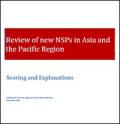What's New
Displaying results 3741 - 3750 of 4914
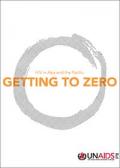
Resource | Publications,
This report, HIV in Asia and the Pacific: Getting to Zero, comes at a decisive point in the international and regional response to the HIV epidemic.
In June 2011, 192 Member States of the United Nations agreed to bold new targets and commitments that can make AIDS a thing of the past, including:
• reducing sexual transmission of HIV by 50%;
• halving HIV infection among people who inject drugs;
• eliminating new HIV infections among children;
• increasing in the number of people on lifesaving treatment to 15 million; and
• closing the US$ 6 billion global AIDS resource gap.
World leaders pledged to achieve these goals by 2015, which will move us closer towards the vision of Zero new HIV infections, Zero discrimination and Zero AIDS-related deaths.
'Getting to Zero' in Asia and the Pacific demands evidence-based responses that solidly focus on and involve key populations most at risk, are adequately resourced and grounded in human rights. Increasingly, countries are acting on this knowledge – and reaping the rewards. Tremendous progress has already been made, proving that the epidemic can be reversed, and that HIV treatment and care can be brought to those who need it.
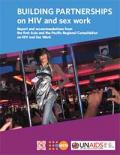
Resource | Publications,
To increase the momentum and effectiveness of the HIV response in Asia and the Pacific, UNFPA,
UNAIDS and the Asia Pacific Network of Sex Workers (APNSW) joined hands to organize, in collaboration with governments, UNAIDS cosponsors, national and local sex worker organizations, and civil society organizations, the first Asia and the Pacific Regional Consultation on HIV and Sex Work in October 2010 in Pattaya, Thailand.
This Regional Consultation, which was the result of an extensive and participatory process spanning over a year, brought together some 140 participants from eight countries in the region as well as selected national, regional and global resource persons that have experience or influence in the area of HIV and sex work. These resource persons included representatives from regional community networks, sex worker organizations, NGOs, researchers, government organizations, and United Nations (UN) agencies. Country teams comprising representatives from national AIDS authorities, Ministries of Health, Ministries of Justice or police, sex worker communities and the UN system participated from Cambodia, China, Fiji, Indonesia, Myanmar, Pakistan, Papua New Guinea, and Thailand.

Resource | Reviews and Snapshots,
A review of 10 of the new National Strategic Plans (NSPs) that had either been approved or were in final draft stage was conducted by UNAIDS RST and the regional HIV and AIDS Data Hub between August – December 2011 in order to assess whether: a) they contained various essential elements that have been defined to constitute an effective response for the countries in the region4, b) to look for improvement in the regional strategic planning in terms of process and components of an effective response, and c) to establish the information necessary for working with countries to review whether NSPs are sufficiently aligned towards the new United Nations High Level Meeting targets that all countries have endorsed.

Resource | Guidelines,
It’s All One Curriculum: Guidelines and Activities for a Unified Approach to Sexuality, Gender, HIV, and Human Rights Education is the product of contributions from individuals around the world. It’s All One Curriculum offers content on almost any topic you might want to include in teaching young people about gender, sexual health, HIV, sexuality, relationships, communication, intimate-partner violence, puberty, reproduction, contraception, abortion, or advocating for their own rights. It is intentionally comprehensive, so that you can select the content and activities that meet your needs.
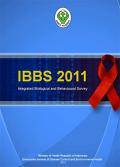
Resource | Publications,
The 2011 Integrated Biological and Behavioural Surveillance (IBBS) was conducted to obtain a picture of the magnitude of the problems, risk factors, knowledge and program scope, with the aim of understanding the dynamics of the HIV epidemic in Indonesia. The 2011 IBBS was conducted in 23 cities/regencies in 11 provinces, with most of the cities/regencies selected being those also surveyed in the 2007 IBBS.
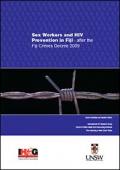
Resource | Publications,
On 1 February 2010, the Crimes Decree 2009 (Decree No. 44) of the Republic of Fiji Islands took effect. A report on sex work and HIV prevention in Fiji had very recently been released. UNAIDS Pacific funded the authors of that report to conduct follow-up research investigating any impacts of the new Decree on sex work and related HIV prevention activities. Thus, the original study was extended to encompass and take account of a changed legal environment. This report is the result.
Sex workers are among those who are most affected by HIV. The availability of appropriate and accessible services, information and resources are necessary conditions for HIV prevention. Nonetheless, prevention efforts will not be effective unless legal, political and social environments enable sex workers to protect themselves and their clients.

Resource | Publications,
The overall aim of the assessment was to gather strategic information about the behaviours and needs of vulnerable and at-risk adolescents in Bhutan aged 13-18 years. The focus of the assessment was on specific behaviours and settings that make this important, yet sometimes forgotten, group of adolescents susceptible to negative social and health outcomes including: tobacco use, alcohol and drug misuse; early school leaving; pregnancy; sexually transmitted infections, including HIV; and violence.
HIV prevalence is currently low in Bhutan however understanding the context for sexual behaviour, violence, and drug use is important for planning future adolescent related policies and programmes - not just for HIV prevention but also to foster healthy sexuality and positive relationships; tobacco, alcohol and drug education; prevention of gender based violence and promotion of mental health.

Resource | Publications,
In 2011, the implementation of the second National Strategic Plan on AIDS in Myanmar started. The NSP II covers the period from 2011‐2015. It builds upon the NSP I, but introduces also some changes to the structure and approach. Notably, prevention is further prioritized and aligned to the latest epidemiological data, the provision of ART set at the center of the provision of care and treatment and finally impact mitigation is highlighted as distinct strategic priority.
The NSP II has a set of ambitious targets that intend to lead the country towards achieving universal access by 2015. The targets were developed and agreed by all stakeholders through the Technical and Strategy Group as well as its technical Working Groups.

Resource | Publications,
The Asia-Pacific region is home to nearly 50% of the world’s children, including large numbers of street-children. In Bangladesh, about 42 million people (32.2% of the total population) are children aged 5-17 years. In Dhaka city where their numbers are increasing, there are an estimated two million street-children. According to the 1989 International Convention on the Rights of the Child, every human aged up to 18 years is a child. However, for the purpose of this study, children of both the sexes who are living and/or working in the streets of Dhaka city and who are aged 5-12 years were defined as street-children.
The findings of the study revealed that the street-children were extremely vulnerable to HIV/AIDS because of their living and working status; peer relationships; harassments by others; risky behaviours, including drug-use and sexual behaviours; lack of knowledge about HIV/AIDS and use of condoms to protect them from HIV/AIDS; and lack access to healthcare services.






